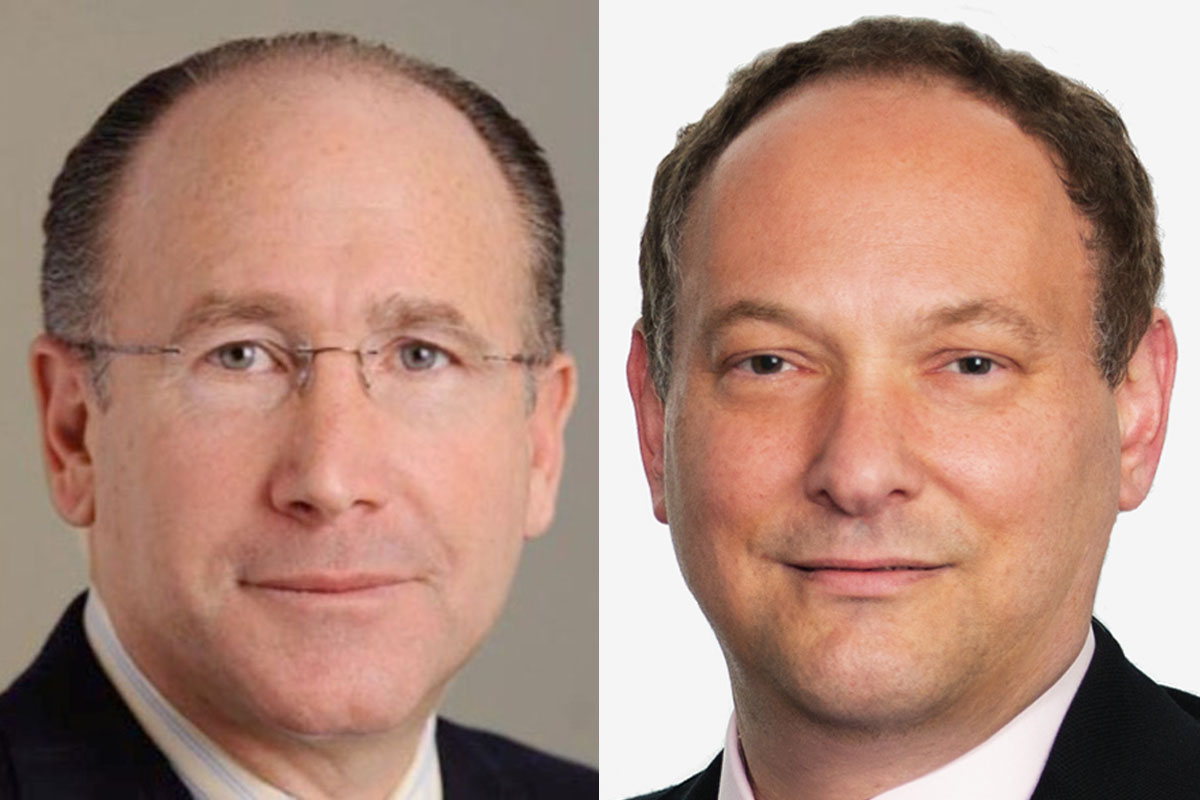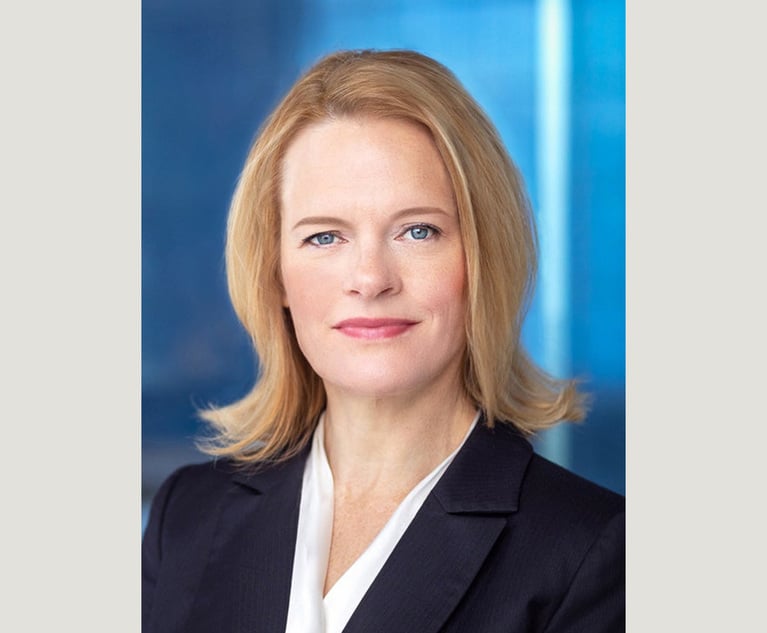Bad Boys, Bad Boys, Whatcha Gonna Do? Clarifying Ambiguities in Full Recourse Provisions
In their Real Estate Financing column, Jeffrey Steiner and David Broderick focus on a case highlighting issues related to guarantor full recourse liability due to breaches of the voluntary lien, transfer and indebtedness carve-outs.
November 19, 2019 at 02:57 PM
7 minute read
 Jeffrey B. Steiner and David Broderick
Jeffrey B. Steiner and David BroderickMuch to the delight of borrowers and guarantors, the U.S. District Court for the Southern District of New York, in 2014, issued a decision granting summary judgment to the defendant guarantor declining to hold the guarantor fully liable for the unpaid loan amount due to "foot faults" triggered by the filing of liens. Broadly speaking, even though a technical violation of the recourse provisions had occurred, the court found the relevant provisions to be ambiguous and, after review of extrinsic evidence, attempted to determine the intent of the parties. However, in 2016, to much less fanfare, the U.S. Court of Appeals for the Second Circuit found that the granting of summary judgment was inappropriate and remanded the matter for further proceedings to determine the parties' intent.
'CP III Rincon Towers v. Cohen'
In CP III Rincon Towers v. Cohen, 13 F. Supp. 3d 307 (S.D.N.Y. 2014), defendant Richard Cohen, through three special purpose borrowing entities (collectively, "borrowers"), obtained a mortgage loan in order to acquire a mixed-use development project in San Francisco. In connection with the loan, the defendant executed a non-recourse carve-out guaranty in favor of the lender ("guaranty"). In the course of performing required renovations of the property, borrowers engaged contractors and were parties to a common development agreement (the Real Estate Owners' Association or "REOA"). Borrowers issued a conditional payment to their general contractor claiming that its work was unsatisfactory, and the general contractor and certain subcontractors filed mechanics liens against the property as well as a judgment lien, and, when borrowers failed to make certain payments required under the REOA, the counterparty under the REOA recorded a notice of delinquency and a claim of lien against borrowers (collectively, the "disputed liens").
Eventually, plaintiff lender obtained the property through a foreclosure sale and sought to recover the outstanding unpaid amount of the loan by filing suit against the defendant alleging that the recording of the disputed liens triggered his personal liability under the guaranty for the full amount of the loan.
The guaranty contained several non-recourse carve-outs that imposed liability on defendant guarantor for the entire outstanding balance of the loan in certain circumstances. Three such carve-outs at issue in this case were the "indebtedness clause," the "voluntary lien clause" and the "transfer clause." The indebtedness and voluntary lien clauses imposed full-recourse liability on the guarantor "if borrower fails to obtain lender's prior written consent to any indebtedness… or voluntary lien encumbering the property (to the extent such consent is required under the loan agreement[)]."
The District Court held that the indebtedness clause was not triggered because, although the loan agreement required borrowers to pay REOA charges and bills for labor and materials when due, "[t]he loan and guaranty do not require borrower to obtain lender's consent before incurring REOA fees or securing contractors." The transfer clause imposed full-recourse liability on the guarantor "if borrower fails to obtain lender's prior written consent to any Transfer if required by the loan agreement." A "transfer" was defined in the loan agreement to occur if borrower shall "[w]ithout the prior written consent of lender,… sell, convey, mortgage, grant, bargain, encumber, pledge, assign, grant options with respect to, or otherwise transfer or dispose of (directly or indirectly, voluntarily or involuntarily, by operation of law or otherwise, and whether or not for consideration or of record) the property or any part thereof or any legal or beneficial interest therein."
Because the "transfer" definition included encumbrances, and a lien is an encumbrance, the transfer clause covered all liens, whether voluntary or involuntary. The District Court concluded that the liens were not voluntary and, therefore, the voluntary lien clause was not triggered. However, because even involuntary liens could trigger the transfer clause, guarantor could be liable under that clause. Accordingly, the District Court concluded that the transfer clause "subsumed" the voluntary lien clause because they overlapped and, as a result, guarantor's liability under the guaranty due to the disputed liens was ambiguous.
By reason of the ambiguity, the District Court attempted to determine the intent of the parties by reviewing extrinsic evidence. "Accordingly, after examining the extrinsic evidence," the District Court concluded "the overwhelming weight of the evidence demonstrates there is no dispute of material fact: [the parties] never intended for the disputed liens to trigger Defendant's full recourse liability under the Transfer Provision. This determination also better harmonizes all guaranty provisions and avoids absurd results."
Subsequently, in CP III Rincon Towers, Inc. v. Cohen, 666 Fed. Appx. 46 (2d Cir. 2016), the Second Circuit vacated and remanded the case back to the District Court for further proceedings. Although the Court of Appeals agreed that the guaranty language was ambiguous, it concluded that the ambiguity should not have been resolved on summary judgment because "the extrinsic evidence neither supplies an unambiguous interpretation of the terms of the guaranty agreement nor indisputable evidence of the parties' intent with respect to the interaction between the transfer and voluntary lien clauses."
The Court of Appeals also held that "[t]he district court incorrectly granted summary judgment to the guarantor with respect to the indebtedness clause" because it "did not fully consider the interaction between [the indebtedness clause] of the guaranty agreement and the special purpose entity provisions of the loan agreement," which required borrowers to obtain lender's written consent prior to taking any action affecting borrowers' special purpose entity status, including, without limitation, the incurrence of indebtedness in excess of $1 million or allowing any indebtedness to become more than 60 days past due.
Conclusion
One of the consequences of the Great Recession was the filing of numerous lawsuits under the so-called "bad boy" guaranties, which resulted in liability or alleged claims of liability for full recourse that had no relation to a bad act by the borrower or guarantor. As a result of these lawsuits, such as the lawsuit outlined above, borrowers and guarantors no longer find it acceptable to rely on the lender's reference in the term sheet to their customary lender loss only and full recourse liabilities.
Accordingly, sophisticated borrowers and guarantors are insisting on having greater clarity with respect to their full recourse obligations. Lenders, in order to remain competitive in the lending marketplace, and to avoid the time and expense of extensive negotiations during the loan document stage with vast disagreement over the full nature of a fill recourse claim, have been willing to identify in the term sheet which obligations will trigger full recourse. In particular, the parties are attempting to reach a meeting of the minds with respect to the indebtedness, voluntary lien and transfer recourse carve-outs.
Generally, lenders are willing to accept there being an affirmative act by the borrower or guarantor as a condition to triggering full recourse. Borrowers will insist such act be a voluntary act (e.g., not a situation resulting from insufficient cash flow or actions by third parties). Accordingly, full recourse for incurring indebtedness is typically limited to a borrower obtaining additional financing, whether secured or unsecured. The full recourse trigger with respect to voluntary liens are usually circumscribed to situations where the borrower has consented to a lien such as a second mortgage or a pledge of equity, and not the result of a third party filing a mechanics' lien or other encumbrance.
As to the full recourse trigger resulting from transfers, lenders and borrowers are generally willing to limit this carve-out to voluntary transfers of the property or of direct or interests in the borrower which result in a change of control. Often, as a trade-off and as a matter of clarification, lenders have agreed to incorporate the foregoing compromises with the understanding that all other indebtedness, liens and transfers not covered by full recourse liability should be recourse to guarantors to the extent the lender suffered, and can prove, a loss.
Jeffrey B. Steiner and David Broderick are partners at McDermott Will & Emery. John Bauco and Sean Thorsen, associates at the firm, assisted in the preparation of this article.
This content has been archived. It is available through our partners, LexisNexis® and Bloomberg Law.
To view this content, please continue to their sites.
Not a Lexis Subscriber?
Subscribe Now
Not a Bloomberg Law Subscriber?
Subscribe Now
NOT FOR REPRINT
© 2025 ALM Global, LLC, All Rights Reserved. Request academic re-use from www.copyright.com. All other uses, submit a request to [email protected]. For more information visit Asset & Logo Licensing.
You Might Like
View All
SEC Official Hints at More Restraint With Industry Bars, Less With Wells Meetings
4 minute read
The CFPB Is Digging In for Last Days of Biden's Term. But What Happens Next?
6 minute read

NY AG James Targets Crypto Fraud Which Allegedly Ensnared Victims With Fake Jobs
4 minute readLaw Firms Mentioned
Trending Stories
- 1Who Is Nicholas J. Ganjei? His Rise to Top Lawyer
- 2Delaware Supreme Court Names Civil Litigator to Serve as New Chief Disciplinary Counsel
- 3Inside Track: Why Relentless Self-Promoters Need Not Apply for GC Posts
- 4Fresh lawsuit hits Oregon city at the heart of Supreme Court ruling on homeless encampments
- 5Ex-Kline & Specter Associate Drops Lawsuit Against the Firm
Who Got The Work
J. Brugh Lower of Gibbons has entered an appearance for industrial equipment supplier Devco Corporation in a pending trademark infringement lawsuit. The suit, accusing the defendant of selling knock-off Graco products, was filed Dec. 18 in New Jersey District Court by Rivkin Radler on behalf of Graco Inc. and Graco Minnesota. The case, assigned to U.S. District Judge Zahid N. Quraishi, is 3:24-cv-11294, Graco Inc. et al v. Devco Corporation.
Who Got The Work
Rebecca Maller-Stein and Kent A. Yalowitz of Arnold & Porter Kaye Scholer have entered their appearances for Hanaco Venture Capital and its executives, Lior Prosor and David Frankel, in a pending securities lawsuit. The action, filed on Dec. 24 in New York Southern District Court by Zell, Aron & Co. on behalf of Goldeneye Advisors, accuses the defendants of negligently and fraudulently managing the plaintiff's $1 million investment. The case, assigned to U.S. District Judge Vernon S. Broderick, is 1:24-cv-09918, Goldeneye Advisors, LLC v. Hanaco Venture Capital, Ltd. et al.
Who Got The Work
Attorneys from A&O Shearman has stepped in as defense counsel for Toronto-Dominion Bank and other defendants in a pending securities class action. The suit, filed Dec. 11 in New York Southern District Court by Bleichmar Fonti & Auld, accuses the defendants of concealing the bank's 'pervasive' deficiencies in regards to its compliance with the Bank Secrecy Act and the quality of its anti-money laundering controls. The case, assigned to U.S. District Judge Arun Subramanian, is 1:24-cv-09445, Gonzalez v. The Toronto-Dominion Bank et al.
Who Got The Work
Crown Castle International, a Pennsylvania company providing shared communications infrastructure, has turned to Luke D. Wolf of Gordon Rees Scully Mansukhani to fend off a pending breach-of-contract lawsuit. The court action, filed Nov. 25 in Michigan Eastern District Court by Hooper Hathaway PC on behalf of The Town Residences LLC, accuses Crown Castle of failing to transfer approximately $30,000 in utility payments from T-Mobile in breach of a roof-top lease and assignment agreement. The case, assigned to U.S. District Judge Susan K. Declercq, is 2:24-cv-13131, The Town Residences LLC v. T-Mobile US, Inc. et al.
Who Got The Work
Wilfred P. Coronato and Daniel M. Schwartz of McCarter & English have stepped in as defense counsel to Electrolux Home Products Inc. in a pending product liability lawsuit. The court action, filed Nov. 26 in New York Eastern District Court by Poulos Lopiccolo PC and Nagel Rice LLP on behalf of David Stern, alleges that the defendant's refrigerators’ drawers and shelving repeatedly break and fall apart within months after purchase. The case, assigned to U.S. District Judge Joan M. Azrack, is 2:24-cv-08204, Stern v. Electrolux Home Products, Inc.
Featured Firms
Law Offices of Gary Martin Hays & Associates, P.C.
(470) 294-1674
Law Offices of Mark E. Salomone
(857) 444-6468
Smith & Hassler
(713) 739-1250






